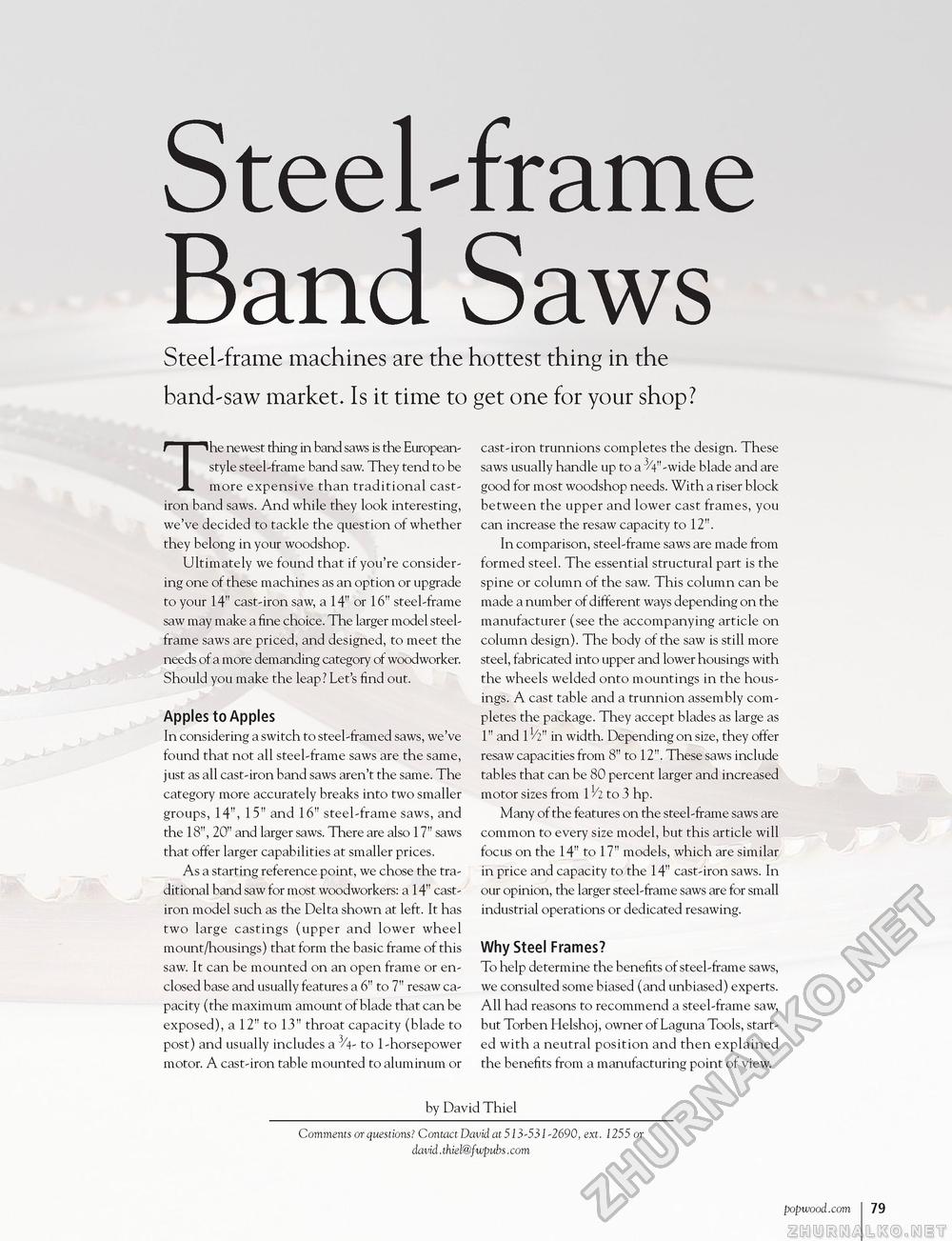Popular Woodworking 2003-06 № 134, страница 81
Steel-frame Band Saws Steel-frame machines are the hottest thing in the band-saw market. Is it time to get one for your shop? The newest thing in band saws is the European-style steel-frame band saw. They tend to be more expensive than traditional cast-iron band saws. And while they look interesting, we've decided to tackle the question of whether they belong in your woodshop. Ultimately we found that if you're considering one of these machines as an option or upgrade to your 14" cast-iron saw, a 14" or 16" steel-frame saw may make a fine choice. The larger model steel-frame saws are priced, and designed, to meet the needs of a more demanding category of woodworker. Should you make the leap? Let's find out. Apples to Apples In considering a switch to steel-framed saws, we've found that not all steel-frame saws are the same, just as all cast-iron band saws aren't the same. The category more accurately breaks into two smaller groups, 14", 15" and 16" steel-frame saws, and the 18", 20" and larger saws. There are also 17" saws that offer larger capabilities at smaller prices. As a starting reference point, we chose the traditional band saw for most woodworkers: a 14" cast-iron model such as the Delta shown at left. It has two large castings (upper and lower wheel mount/housings) that form the basic frame of this saw. It can be mounted on an open frame or enclosed base and usually features a 6" to 7" resaw capacity (the maximum amount of blade that can be exposed), a 12" to 13" throat capacity (blade to post) and usually includes a 3/4- to 1-horsepower motor. A cast-iron table mounted to aluminum or cast-iron trunnions completes the design. These saws usually handle up to a 3/4"-wide blade and are good for most woodshop needs. With a riser block between the upper and lower cast frames, you can increase the resaw capacity to 12". In comparison, steel-frame saws are made from formed steel. The essential structural part is the spine or column of the saw. This column can be made a number of different ways depending on the manufacturer (see the accompanying article on column design). The body of the saw is still more steel, fabricated into upper and lower housings with the wheels welded onto mountings in the housings. A cast table and a trunnion assembly completes the package. They accept blades as large as 1" and 11/2" in width. Depending on size, they offer resaw capacities from 8" to 12". These saws include tables that can be 80 percent larger and increased motor sizes from 11/2 to 3 hp. Many of the features on the steel-frame saws are common to every size model, but this article will focus on the 14" to 17" models, which are similar in price and capacity to the 14" cast-iron saws. In our opinion, the larger steel-frame saws are for small industrial operations or dedicated resawing. Why Steel Frames? To help determine the benefits of steel-frame saws, we consulted some biased (and unbiased) experts. All had reasons to recommend a steel-frame saw, but Torben Helshoj, owner of Laguna Tools, started with a neutral position and then explained the benefits from a manufacturing point of view. by David Thiel Comments or questions? Contact David at 513-531-2690, ext. 1255 or david.thiel@fwpubs.com popwood.com 79 |








